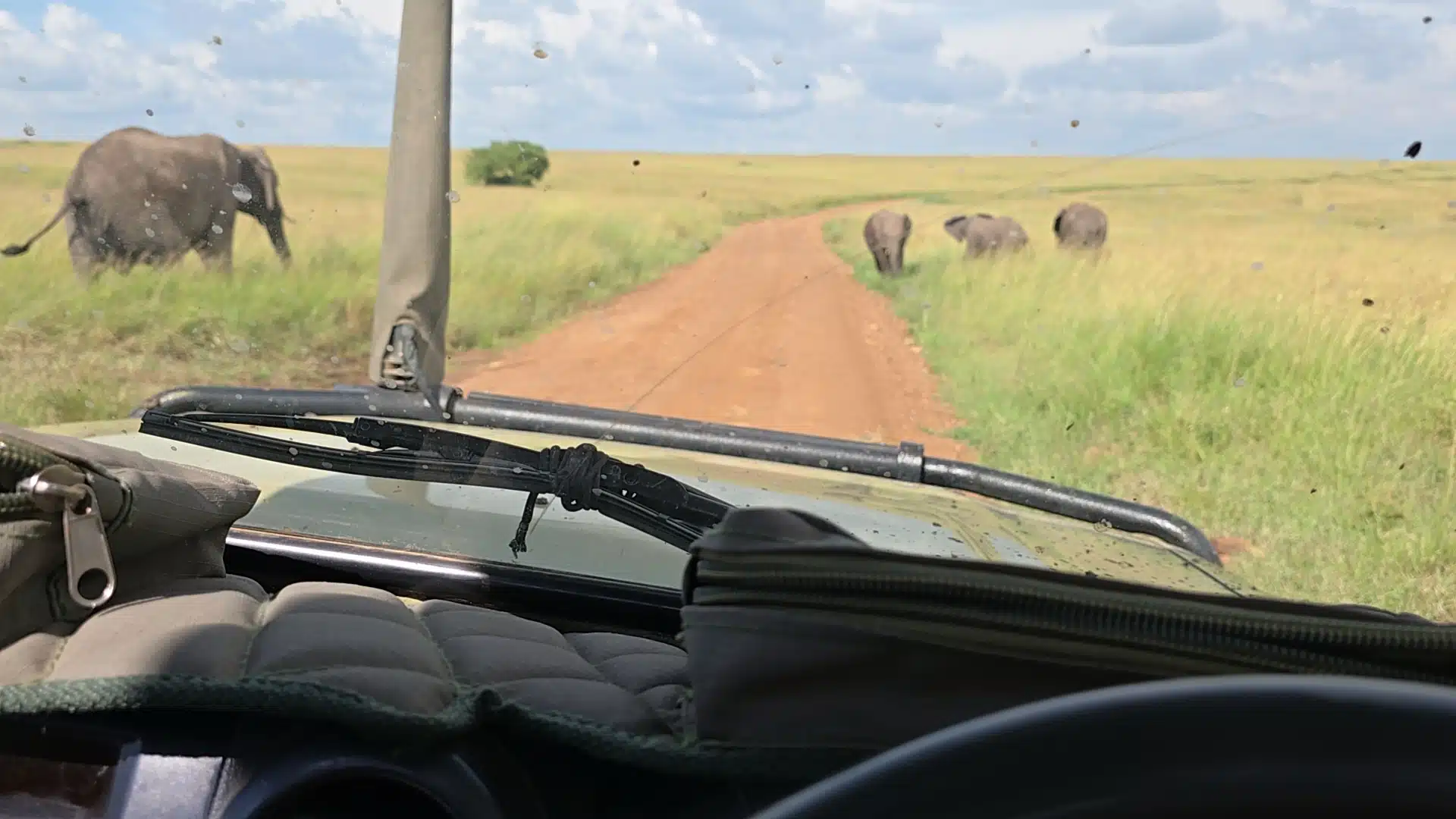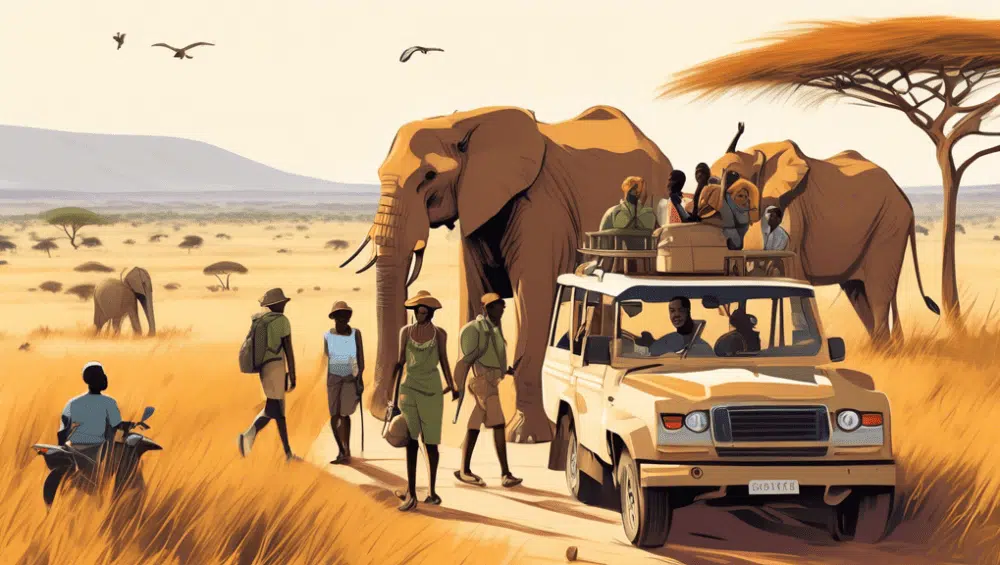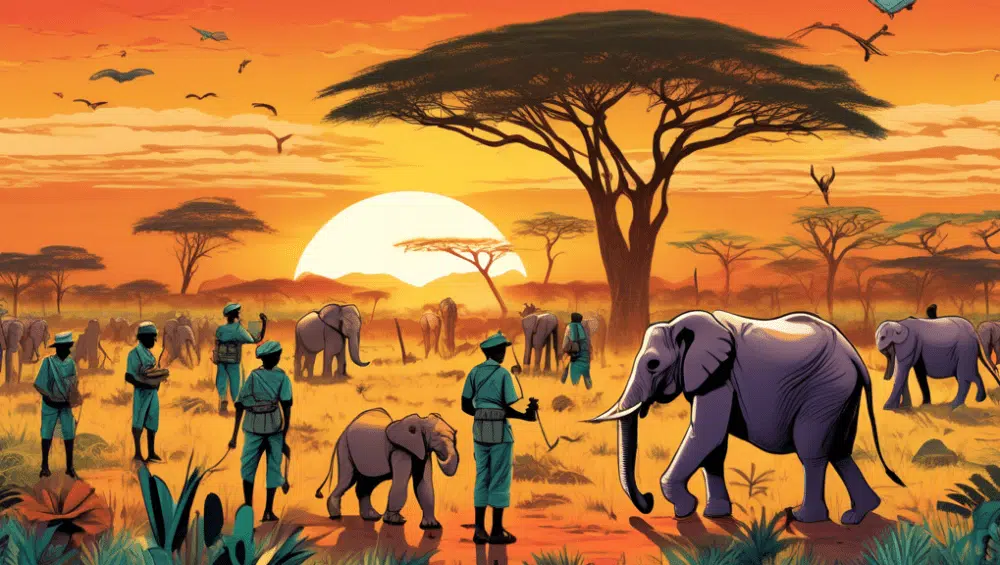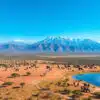Gorilla Trekking in Uganda vs Safari in Kenya
Embarking on an adventure through the heart of East Africa offers some of the most remarkable wildlife experiences on the planet, particularly through gorilla trekking in Uganda and safari adventures in Kenya. Each destination boasts its own unique charm and exhilarating encounters, drawing travelers who seek to connect with nature and explore diverse ecosystems. In this article, we will delve into the comparative aspects of gorilla trekking in Uganda versus safari in Kenya, highlighting their individual attractions, wildlife diversity, and practical considerations to help you make an informed decision on your next adventure.
 Uganda vs Safari in Kenya‘ style=’display: block; margin: auto; max-width: 100%; height: auto;’>
Uganda vs Safari in Kenya‘ style=’display: block; margin: auto; max-width: 100%; height: auto;’>
Key Takeaways
- Gorilla trekking in Uganda offers a unique, intimate encounter with endangered mountain gorillas.
- Kenya‘s safaris provide a diverse wildlife experience, showcasing the Big Five and expansive landscapes.
- Both Uganda and Kenya boast distinct natural beauty and ecosystems that attract different types of adventurers.
- Cost, accessibility, and accommodations vary between gorilla trekking and safari experiences, influencing traveler choices.
- Deciding between gorilla trekking in Uganda and a safari in Kenya ultimately depends on personal travel preferences and wildlife interests.
Introduction to Gorilla Trekking and Safari Experiences
Gorilla trekking in Uganda and safari in Kenya are two of Africa’s most exhilarating wildlife experiences, drawing adventurers from across the globe. While both activities promise unforgettable encounters with stunning natural scenery and diverse wildlife, they each offer a unique flavor of exploration. Gorilla trekking in Uganda allows travelers to venture deep into the impenetrable forests of Bwindi and Mgahinga, where they can observe majestic mountain gorillas in their natural habitat. This intimate experience not only highlights the conservation efforts surrounding these incredible primates but also immerses trekkers in the rich biodiversity of the region. On the other hand, a safari in Kenya, particularly in renowned national parks like the Maasai Mara and Amboseli, presents an opportunity to witness the famous African Big Five in their vast savanna homes. Here, visitors can enjoy game drives, hot air balloon rides, and cultural encounters with local communities. Each journey, whether it be gorilla trekking in Uganda or a safari in Kenya, promises awe-inspiring moments that showcase the beauty and complexity of Africa’s wildlife, making them must-do excursions for any nature enthusiast.
Comparative Overview of Uganda and Kenya‘s Wildlife
When it comes to an unforgettable wildlife experience in East Africa, the debate between gorilla trekking in Uganda and a safari in Kenya often arises. Both countries offer stunning landscapes and unique wildlife encounters, catering to different adventure preferences. Uganda is renowned for its majestic mountain gorillas, with the Bwindi Impenetrable National Park being a premier destination for those seeking a close encounter with these endangered animals. Trekking through lush forests to see gentle giants in their natural habitat is a life-changing experience. On the other hand, Kenya is celebrated for its vast savannahs and diverse ecosystems, providing an unparalleled safari experience. Visitors can witness the awe-inspiring Great Migration in the Maasai Mara, where millions of wildebeest traverse the plains in search of greener pastures. While Uganda offers an intimate gorilla trekking experience that highlights conservation efforts, Kenya‘s safaris present a thrilling adventure filled with iconic wildlife sightings and rich cultural encounters. Whether you choose the rugged wilderness of Uganda or the expansive plains of Kenya, both experiences promise to leave an indelible mark on your heart and soul.
‘Traveling – it leaves you speechless, then turns you into a storyteller.’ – Ibn Battuta
The Unique Appeal of Gorilla Trekking in Uganda
Gorilla trekking in Uganda offers a unique and intimate wildlife experience that set it apart from the more traditional safari in Kenya. While both adventures immerse travelers in Africa’s breathtaking landscapes and diverse wildlife, gorilla trekking dives into the heart of the lush, misty forests of Bwindi Impenetrable National Park, where guests can observe the majestic mountain gorillas in their natural habitat. This unparalleled experience allows visitors to witness these gentle giants up close, engaging with them in an environment that feels untouched by modern life. In contrast, a safari in Kenya showcases the vibrant savannahs teeming with iconic wildlife such as lions, elephants, and zebras. However, the emotional connection formed during a face-to-face encounter with gorillas often leaves trekkers with a profound sense of appreciation for conservation efforts and the importance of protecting these endangered species. Both gorilla trekking in Uganda and a safari in Kenya provide unforgettable adventures, but for those seeking a deeper connection with wildlife in a rugged and remote setting, Uganda‘s gorilla trekking stands out as a truly extraordinary experience.
The Thrill of Safari Adventures in Kenya
When it comes to experiencing the raw beauty of Africa, both Gorilla Trekking in Uganda and Safari in Kenya offer unique thrills that are hard to resist. While Uganda is renowned for its lush, misty mountains where adventurers can trek through the dense jungles to observe the extraordinary mountain gorillas in their natural habitat, Kenya showcases an exhilarating safari experience with its vast savannahs, teeming wildlife, and iconic landscapes. Travelers often find themselves torn between these two destinations, as Gorilla Trekking in Uganda allows for intimate encounters with one of the world’s most endangered species, whereas a safari in Kenya provides the chance to witness the Great Migration, where millions of wildebeest and zebras traverse the plains. Both experiences are incredibly rewarding, offering distinct perspectives on Africa’s rich biodiversity and culture. However, if one is seeking a blend of exhilarating wildlife encounters and breathtaking scenery, opting for a safari in Kenya might just take the crown.
Practical Considerations: Cost, Accessibility, and Accommodations
When considering adventure travel in East Africa, the choice between gorilla trekking in Uganda vs safari in Kenya often comes down to practical considerations such as cost, accessibility, and accommodations. Gorilla trekking in Uganda, specifically in Bwindi Impenetrable National Park, can be a thrilling experience, but it’s important to note that permits can be costly, generally ranging around $700 per person. In contrast, a safari in Kenya can be more budget-friendly, with options ranging widely from affordable camping to luxury lodges. Accessibility wise, Uganda‘s remote regions can require a bit more travel time, often necessitating a domestic flight or lengthy drive, whereas Kenya‘s well-established safari circuit offers more streamlined access to numerous national parks and reserves. As for accommodations, both countries boast a myriad of options, but Kenya‘s safari lodges typically provide a more comprehensive range of amenities, catering to both the luxury and mid-range traveler. Weighing these aspects will help you decide whether gorilla trekking in Uganda or a safari in Kenya aligns better with your travel preferences and budget.
Conclusion: Choosing Between Gorilla Trekking and Safari
In conclusion, when considering Gorilla Trekking in Uganda vs Safari in Kenya, the choice ultimately hinges on the type of adventure and wildlife experience you seek. Gorilla trekking offers a unique, intimate encounter with one of the world’s most endangered species, set against the stunning backdrop of Uganda‘s lush forests. This experience is not just about the trek itself but also about contributing to conservation efforts that protect these magnificent creatures. On the other hand, a safari in Kenya immerses you in the vibrant ecosystems of the savannah, providing opportunities to witness the Great Migration and encounter a diverse array of wildlife, from majestic lions to elegant giraffes. Both options present unforgettable experiences and breathtaking landscapes, but they cater to different travel desires—whether you’re driven by a passion for primatology or a fascination for the dramatic drama of the African plains. Ultimately, it’s about choosing the adventure that aligns with your interests, ensuring that your journey is as enriching as it is exciting.



















